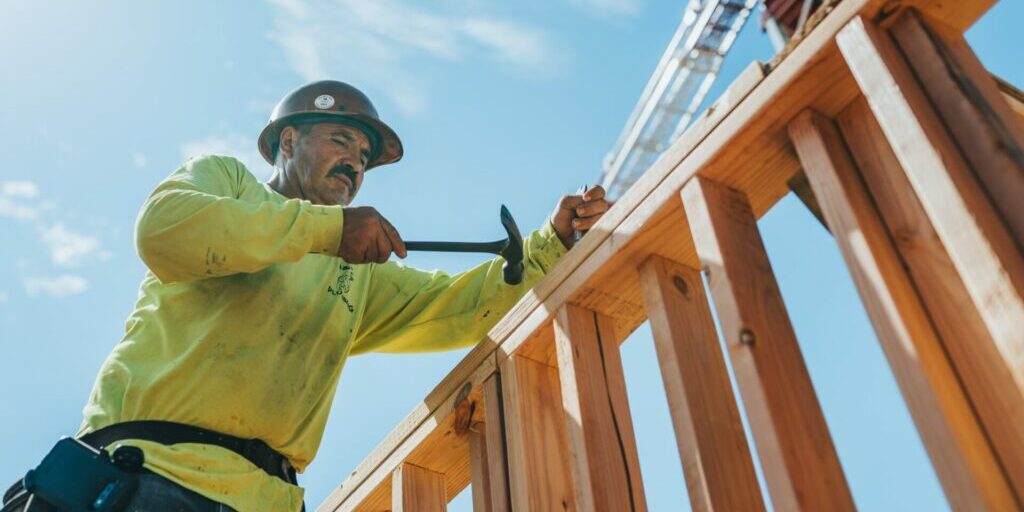Constructing Profitability: The Future of Supply Chain Management

Supply chain management has become increasingly challenging for the construction industry.
Transportation costs have increased steadily since the pandemic. And many building materials are entirely out of stock or have extended lead times.
In addition, sustainability is quickly becoming a driving factor in design. Architects and engineers are increasingly specifying cost-effective, eco-friendly solutions in their projects. These materials are often difficult to source, leading to added frustration and delays.
To achieve profitability, construction companies must re-evaluate their supply chains and procurement processes while seeking opportunities to streamline operations and reduce costs.
Here’s what we cover:
- What is supply chain management (SCM)?
- Why is construction supply chain management so challenging?
- What are the top 4 supply chain challenges in the construction industry?
- Tips for improving supply chain management (SCM)
- Here are five areas construction firms can improve now to secure a profitable future
- Supply chain management for the 21st century and beyond
What is supply chain management (SCM)?
Supply chain management (SCM) refers to the systems, practices, and processes used to manage the flow of construction materials across an organization’s entire project portfolio.
Successful supply chain management also includes cultivating positive, productive relationships between stakeholders in the supply chain.
To be successful, manufacturers, suppliers, transportation providers, contractors, and subcontractors must work together to provide materials to their construction projects in a timely fashion for maximum productivity.
Why is construction supply chain management so challenging?
The construction industry faces a multitude of supply chain challenges.
For one, the construction industry is fragmented, with many small and medium enterprises (SMEs) accounting for most construction activity. This fragmentation makes it challenging to develop economies of scale and achieve the benefits of standardization and automation.
In addition, the construction industry is known for its slow adoption of technology, which further hampers efforts to streamline supply chains.
And finally, the procurement process begins in the preconstruction phase, but unfortunately, preconstruction is often rushed in the project management process.
Larger Design-Build firms have an advantage here, as their preconstruction activities begin much earlier.
But we still live in a predominantly Design-Bid-Build world.
And that means most general contractors don’t get the details of their project’s material requirements until after their firm has won the bid.
By then, the clock is ticking. Owners want to see activity on their construction site, meaning project managers have less time for their preconstruction process.
What are the top 4 supply chain challenges in the construction industry?
The construction industry faces several challenges in supply chain management, including international conflicts, dysfunctional trade agreements, unreliable carrier capacities, labor shortages, and more. But these four supply chain issues top the list.
1) Rising materials costs
The surge in demand against limited availability has caused the cost of building materials to rise exponentially. The dramatic rise and fall of prices put a pinch on cash flow and make it difficult for construction firms to predict and control costs.
2) Limited supply of materials
As demand increases, the availability of materials continues to decline. Material suppliers struggle with transportation inefficiencies. And logistic bottlenecks further exacerbate the issue. Both trends lead to long delays and lead times that add to project costs.
3) Increased environmental regulation
Construction designs include more cost-effective, eco-friendly materials. In addition, construction companies must meet stricter environmental regulations. Both trends lead to higher initial costs as suppliers, construction firms, and the supply chain adapt.
4) Complex, globalized supply chains
The complexity of the globalized supply chains makes it difficult to know where raw and finished materials are. Without visibility into the flow of finished materials, predicting jobsite deliveries, scheduling work crews, and controlling costs are much more difficult.
The construction industry supply chain is changing rapidly. The old ways of procurement are no longer effective.
But fortunately, there are several steps companies can take to stay on top of this evolving situation and keep materials flowing to their construction projects.
Tips for improving supply chain management (SCM)
The good news is that several initiatives are underway to address these challenges.
For example, the Construction Supply Chain Management Council (CSCMC) was established in the UK to promote better supply chain management practices within the construction industry. In addition, many construction companies are beginning to embrace automation and digitization to improve efficiency and coordination.
Current adaptive strategies include modernizing and digitizing processes, automating parts of the supply chain, just-in-time delivery methods, and finding new processes to reduce waste.
Companies committed to digital transformation can become more agile by tapping into the power of big data to improve their predictive power and decision-making.
Here are five areas construction firms can improve now to secure a profitable future
1) Establish clear communication and collaboration between stakeholders
Strong, collaborative partnerships benefit every stakeholder across the construction value chain, and clear communication is vital to this effort.
Stakeholders must stay well informed on project progress, updated drawings and specifications, material needs, and delivery timelines throughout every step.
Technology can facilitate this process by allowing seamless collaboration among partner organizations in real-time with instant access to shared data sets.
With improved visibility into project progress at any given time, teams can track material usage and supply performance more accurately against budgeted costs and better address potential bottlenecks before they become costly delays.
2) Develop a centralized system for inventory management and procurement
A single platform to track and manage material needs will ensure that materials are ordered and delivered on time.
An integrated resource management system also helps to reduce manual errors by providing up-to-date information about production schedules, inventory levels, and delivery dates.
A recent survey conducted by KPMG indicates that more than 60% of construction companies have already implemented or plan to implement technology-driven, single-platform solutions for tracking material needs.
And research and analysis from Mckinsey and Company confirm that technology is central to building a more resilient, adaptive future.
Digital solutions streamline the entire process from ordering materials through delivery, allowing construction teams more freedom to focus on other aspects of their projects.
Additionally, resource management systems enable contractors and suppliers greater visibility into order progress in real-time, resulting in fewer mistakes due to outdated information.
Supply chain management goes digital.
3) Invest in technology
Resource management software gives construction executives insight and control over their entire operation.
From vendor management to resource allocations and daily payroll management, cloud-based information management solutions can provide a 6x ROI over outdated manual systems.
And cloud-based systems with Artificial Intelligence (AI) technology can also help streamline procurement. When integrated with the project schedule, AI-based resource management solutions predict material needs and future demand to match material usage.
These technologies ensure smooth procurement operations and that projects don’t suffer unexpected delays.
4) Build strong supply chain partnerships
Building strong relationships with vendors, suppliers, subcontractors, and other stakeholders ensures materials are procured on time and at reasonable prices.
Creating an effective supply chain structure provides easy access to resources, better budget management, and improved project delivery times.
Strong partnerships improve project completion times and customer satisfaction while reducing operational risks.
A well-planned supply chain management strategy leads to better control over payments, more controlled inventory management, and streamlined material delivery processes.
And that leads to more successful projects.
5) Invest in training and development for your team
Ensuring that your team has the skills and knowledge to successfully manage the supply chain will help increase efficiency and reduce project costs.
The Council of Supply Chain Management Professionals (CSCMP) offers educational resources and training to bring your procurement team up to speed.
Supply Chain Digital and Supply Chain Dive are also great industry resources to stay on top of the evolving global supply chain trends, news, and available resources.
Supply chain management for the 21st century and beyond
By taking a strategic approach to supply chain management—including
- Establishing clear communication between stakeholders,
- Investing in technology, and
- Building strong supply chain partnerships
- —construction companies can improve procurement times, reduce project costs, and increase profitability.
Get a custom demonstration of the Linarc construction management system today.
Linarc is an intelligent, intuitive, easy-to-use tool that simplifies the complexity of today’s projects.
Connect – Build – Thrive with Linarc




